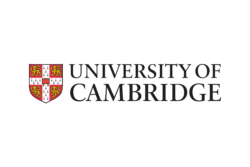This website uses cookies so that we can provide you with the best user experience possible. Cookie information is stored in your browser and performs functions such as recognising you when you return to our website and helping our team to understand which sections of the website you find most interesting and useful.

A novel hybrid High-Temperature Superconductor (HTS) trapped field magnet
Case Study
The Royce Wide Bore Magnet at the University of Cambridge was used by researchers from the University of Strathclyde. They investigated trapped fields of a HTS-stacked ring magnet with and without HTS stacks inserted and observed a novel characteristic.
The results showed that the HTS-stacked ring magnet is capable of achieving a stable and expansive trapped field. It also displayed a novel characteristic: an escalating trend in the central field during magnetization. This had not been previously observed in the magnetization of traditional HTS bulk and stack materials.
High Temperature Superconductors (HTS) have great potential for applications as quasi permanent magnets. However, traditional HTS materials such as bulks and stacks are limited in both the mechanical strength and size.
The recently proposed HTS-stacked ring magnet has the potential to overcome these limitations. Current research on hybrid HTS-stacked ring magnets in high magnetic field environments is notably lacking. Our innovative hybrid HTS trapped field magnet, designed to facilitate large dimensions while maintaining high magnetic fields, aims to address this gap. Our magnet’s substantial 90 mm diameter precludes the use of standard small-bore magnets for magnetization.
The result
Two HTS-stacked ring magnets have been characterised successfully in the 12 Tesla wide bore magnet hosted by Royce@Cambridge The HTS-stacked ring magnets are field cooled to 25 K, external field removed and resulting trapped field observed. The HTS-stacked ring magnet trapped 3.79 T it was observed that the central field exhibited an ascending trend during the removal of the external field.
Subsequently, the hybrid HTS-stacked ring magnet, featuring inserted HTS bulk stacks, was magnetized, achieving a trapped field of 6.6 T. Drawing on the observed field ascent phenomenon, a numerical analysis was conducted. This study suggests that the HTS-stacked ring magnet possesses the potential to trap a field greater than the initially applied one, a feat unachievable by traditional HTS bulks and stacks.
Royce report
Anthony Dennis, manager of the Royce wide-bore magnet, demonstrated exceptional expertise throughout the duration of the project. His professional and efficient assistance significantly contributed to the smooth progression of our research. Thanks to his invaluable help, all aspects of the project proceeded seamlessly, and the equipment functioned flawlessly, fulfilling all necessary requirements.
Conclusion
This research offers fresh insights into the study of trapped fields based on HTS materials, particularly in attaining superior trapped fields with a reduced applied field and increased efficiency. In future studies, we intend to refine the design of the trapped field magnet, drawing from the results and analyses of this research, with an aim to realize a trapped field exceeding the applied field. This study is poised to inspire new paradigms in the design of trapped field magnets, especially those utilizing coated superconducting materials.
We focused on the unique magnetization characteristics of HTS-stacked ring magnets that can achieve a trapped field higher than the applied field. We investigated the reasons leading to the field ascent during magnetization and a finally trapped field higher than the applied field by normal field cooling process. We also found that the HTS stack inserts can suppress the rise of the magnetic field and studied this phenomenon.
We’re delighted to have been able to support this novel and interesting work from Strathclyde and we look forward to further supporting this project.
Prof. John Durrell
Professor of Superconductor Engineering at the University of Cambridge
Collaborators
Anthony Dennis demonstrated exceptional expertise throughout the duration of the project. His professional and efficient assistance significantly contributed to the smooth progression of our research. Thanks to his invaluable help, all aspects of the project proceeded seamlessly.
Further Information
Funding: Cambridge Royce Facilities Grant EP/P024947/1 and
Sir Henry Royce Institute – Recurrent Grant EP/R00661X/1
£1670 total



